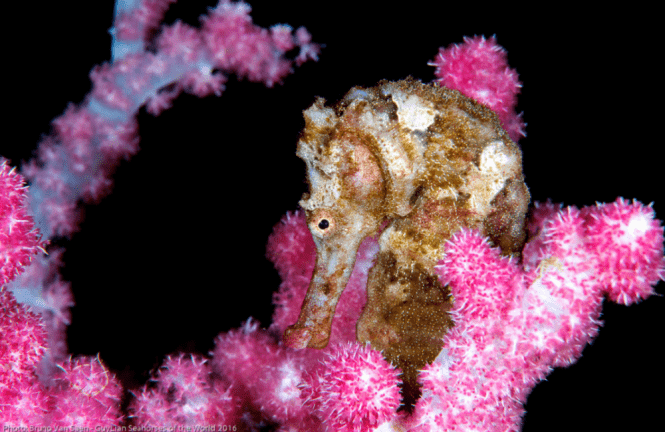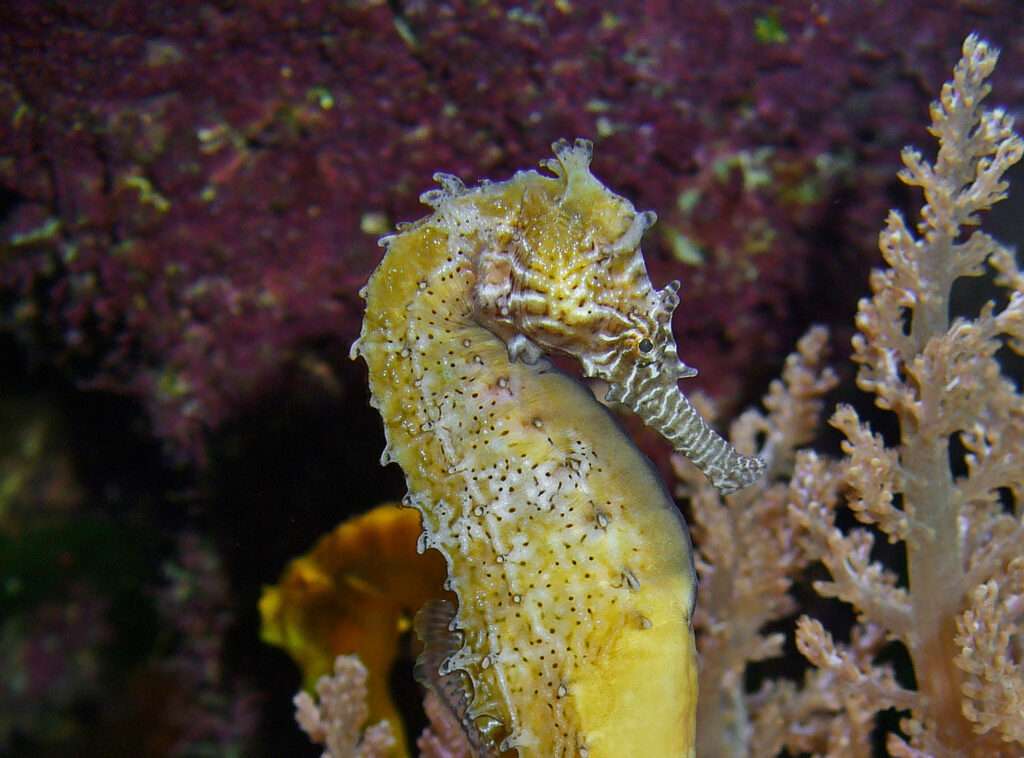
The fish family Syngnathidae includes the Hippocampus spinosissimus. From Taiwan and northern Australia to India and Sri Lanka, it lives in coastal waters. Overfishing as a result of both planned and accidental catch has put it in jeopardy. Because they retain the eggs in a brood pouch before giving birth to live young, this species’ males are ovoviviparous.
A little sea fish called the Hippocampus spinosissimus measures about 4.9 in (12.5 cm) in length. It features a short coronet and a long nose that can be orange, red, or dark brown in hue. Along with having a black front in its head, the seahorse also has saddles or bands of pale grey covering its tail and trunk. It is often orange and red in color and dwells in the deepest parts of the ocean, which makes it simpler for it to blend in with corals and sponges.
Identification
The Hippocampus spinosissimus has a short coronet, a long snout, and a typical length of 12.5 centimeters (4.9 in). Juveniles have more spines than adults do, and spines change throughout life. Individuals frequently have a black front of the head, a yellow-orange to deep red or dark brown snout, and a pale grey saddle or band covering the trunk and tail. The coloration of deep water specimens is often red or orange, which matches the sponges and corals there.

Habitat
This seahorse lives in reef systems at depths of up to 70 meters, occupying sand or silt bottoms (230 ft). The majority of individuals are found in the central Philippines, where they live with sponges, sea urchins, sea stars, sea pens, octocorals, underwater timber, and macroalgae on generally barren soft or sandy bottoms and depressions. Rarely do they occur in close proximity to reefs or hard corals.
The hedgehog seahorse, or Hippocampus spinosissimus, is a small seahorse that lives in coral reef systems off the shores of Indonesia, Taiwan, Sri Lanka, and other adjacent nations as well as the mud and sand bottoms of continental shelves that are close to the shore. They also live in seaweed rafts, where they cling to the flora with their tails. In the Indo-Pacific Ocean, they are common.
Feeding
This species is carnivorous, consuming various planktonic invertebrates as well as small crustaceans like amphipods, gammarid and copepods, caridean shrimps and caprellid.
Growth and Reproduction
In the ovoviviparous Hippocampus spinosissimus species, the female lays her eggs in a brood pouch that is located on the male’s stomach via an ovipositor. After fertilizing and safeguarding the growing embryos, the male gives birth to small, independent (5.63 millimeters (0.222 in)) offspring. Around 10.4 centimeters is when people reach sexual maturity (4.1 in).
Table





